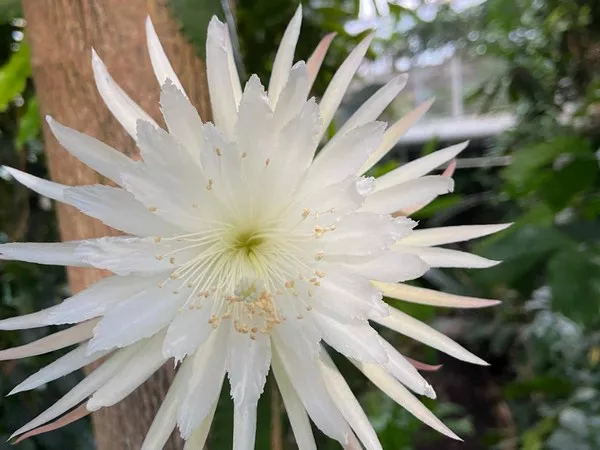Gardenias (Gardenia jasminoides) are renowned for their exquisite beauty and captivating fragrance. These evergreen shrubs are prized for their elegant white blossoms and glossy dark green leaves, making them a favorite among garden enthusiasts. However, coaxing these finicky plants to flower can be a challenge. In this article, we’ll explore the art of cultivating thriving gardenias and unlocking their full flowering potential.
1. Choosing the Right Variety
Selecting the appropriate gardenia variety is the first step towards successful blooming. While there are several cultivars available, not all are equally suited to every climate and growing condition. Varieties like ‘Veitchii’ and ‘Kleim’s Hardy’ are more tolerant of cooler temperatures, whereas ‘August Beauty’ and ‘Mystery’ thrive in warmer climates. Research the specific requirements of each variety and choose one that aligns with your climate zone.
2. Ideal Growing Conditions
Gardenias thrive in specific environmental conditions that mimic their native habitats. They prefer well-draining, acidic soil with a pH ranging from 5.0 to 6.0. Planting in a location with partial shade ensures they receive the necessary sunlight without enduring scorching heat. Adequate air circulation is vital to prevent fungal diseases, so avoid overcrowding and ensure proper spacing between plants.
3. Proper Planting Techniques
Plant gardenias at the same depth as they were in their nursery containers. Dig a hole slightly larger than the root ball and amend the soil with organic matter such as compost or peat moss to improve drainage and acidity. Gently tease out the roots before placing the plant in the hole and backfill with soil. Water thoroughly to eliminate air pockets and encourage root establishment.
4. Adequate Watering
Consistent and appropriate watering is essential for gardenias. They prefer evenly moist soil but can’t tolerate standing water. During the growing season, water deeply and regularly to keep the soil consistently damp. Mulching around the base of the plant helps retain moisture and keeps the roots cool. Reduce watering during the winter months when the plant is dormant.
5. Fertilization
Feeding gardenias with the right nutrients at the right times is crucial for promoting flowering. Use a fertilizer formulated for acid-loving plants, such as one designed for azaleas or camellias. Begin fertilizing in early spring and continue every 4 to 6 weeks until early autumn. Avoid over-fertilization, which can lead to excessive foliage growth at the expense of flowers.
6. Pruning Techniques
Pruning gardenias helps shape the plant and encourage new growth, which can lead to more flowers. After the main flowering period, usually in late spring to early summer, prune selectively to remove spent blooms and shape the shrub. Avoid heavy pruning in late summer or fall, as this can remove the buds that will produce next year’s flowers.
7. Temperature and Humidity Control
Gardenias are sensitive to temperature fluctuations and humidity levels. Sudden drops in temperature can cause bud drop, where flower buds prematurely fall off before blooming. To combat this, consider bringing potted gardenias indoors during cold spells. Increasing humidity around the plants, either through misting or placing a tray of water nearby, can also help prevent bud drop.
8. Pest and Disease Management
Keeping gardenias healthy requires vigilance against pests and diseases. Common pests include whiteflies, aphids, and mealybugs. Regularly inspect the leaves and stems for signs of infestation and treat promptly with insecticidal soap or neem oil. Fungal diseases like powdery mildew and sooty mold can be prevented by maintaining good air circulation and avoiding overhead watering.
9. pH Monitoring and Soil Amendments
Regularly monitor the soil pH to ensure it remains within the optimal range for gardenias. If the pH starts to drift towards alkalinity, consider amending the soil with sulfur or iron sulfate to maintain the desired acidity. Test the soil annually to make necessary adjustments and provide the best conditions for flower production.
10. Patience and Consistency
Lastly, cultivating gardenias requires patience and consistency. These plants may take time to establish themselves and start producing abundant blooms. Even with the right care, it might take a year or more for a newly planted gardenia to reach its full flowering potential. Stay committed to proper care practices, and the rewards of fragrant and stunning blossoms will be well worth the effort.
Conclusion
Growing gardenias that burst forth with exquisite blooms is a rewarding endeavor that demands attention to detail and adherence to specific care practices. By selecting the right variety, providing ideal growing conditions, proper planting techniques, and consistent care, you can encourage your gardenias to flourish and grace your garden with their captivating fragrance and timeless beauty. Remember that gardening is a journey, and each step you take towards creating a conducive environment for your gardenias will bring you closer to the rewarding experience of abundant flowering.


